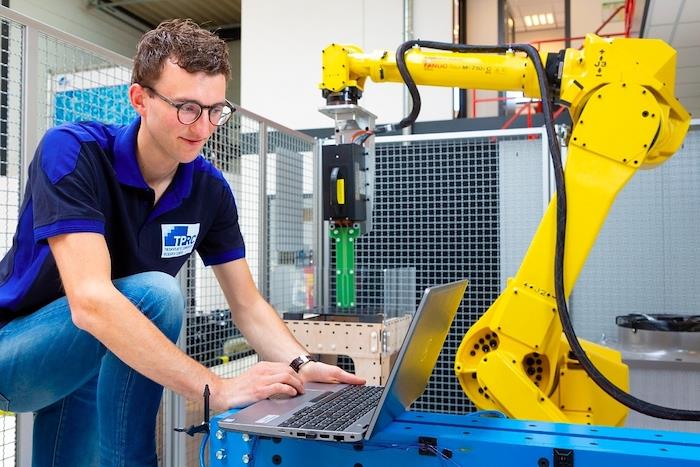In short
- Light aircrafts and cars use less fuel than heavier ones. TPRC in Enschede researches the applications of thermoplastic composites that could contribute to a cleaner future for the aviation and automotive industries.
- Erik Krämer supervises PhD students at TPRC, and he connects researchers and the industry.
Global Goal

The TPRC institute in Twente, for example, focuses on the cooperation between researchers and entrepreneurs to make a difference in the aviation and automotive industries. Around thirty people are working on different ways to make parts as light as possible. The lighter an aircraft or car is, the cleaner it can be flown or driven since less fuel is required.
Related article
At the TPRC premises on the Palatijn in Enschede, Senior Research Associate and Business Developer Erik Krämer explains what TPRC does and the innovative ways in which they work. “We work with thermoplastic composite materials, and use them to their limits. The production of thermoplastics is much faster and therefore cheaper. It is possible to weld the material together, so it is no longer necessary to connect parts with bolts, rivets or glue. That means less weight is added. Complex geometries can now be made with thermoplastic composites, partly thanks to the research at TPRC. Thermoplastic composites can replace heavier materials such as steel or aluminium as a result.
Krämer has been involved with TPRC since 2015. He did his graduation project for his Mechanical Engineering studies with them, and he recently completed his four-year PhD research there, too. “I now supervise several PhD students who do research here, and I am also a great discussion partner for market parties because of my technical knowledge. This innovation is difficult to understand, and the market is not yet ready. They want to innovate, but they do not always have the means. They do not have the knowledge and people to make changes on a large scale. We, as a non-profit organisation, help companies with this. We think along and solve problems. We work with the material all day. We can make predictions about (proposed) applications by understanding how it behaves under all kinds of conditions. Endless experimenting until a good result is achieved is, therefore, a thing of the past.”

Several partners in the aviation industry have joined the consortium from Enschede. Fokker and Boeing are well-known names, but players from the region such as Toray Advanced Composites (formerly known as TenCate) and AniForm Engineering have also joined TPRC.
“We are now working together with all 22 parties”, says Krämer. “We also work closely together with the University of Twente. We even keep some analysis equipment at the UT.”
Employees in TPRC’s research centre are constantly acquiring new knowledge so that more applications become available. For example, it has recently become possible to weld various materials to thermoplastic composites. “Again to make the products lighter; that is our goal.”
Krämer shows some parts made of thermoplastic composites as examples, such as ribs from an aircraft wing. They are as light as a feather.
TPRC also thinks about how thermoplastic composites can be recycled. “Recycling is very difficult with traditional composites, but thermoplastics can be recycled. If you melt it, you can make other products from it. This is currently only done on a small scale right now with residual waste from production processes. However, once the first planes with thermoplastic composites have been written off in about thirty years, we will be ready to make the materials suitable for reuse.”
If you want to learn more about TPRC and about researching thermoplastic composites, you can watch the ‘TPRC Talks’ online; live online talk shows about the research and world of thermoplastic composites.
Date: 21 September 2021 |
Source of tekst: TPRC |
Author: Maaike Thüss







